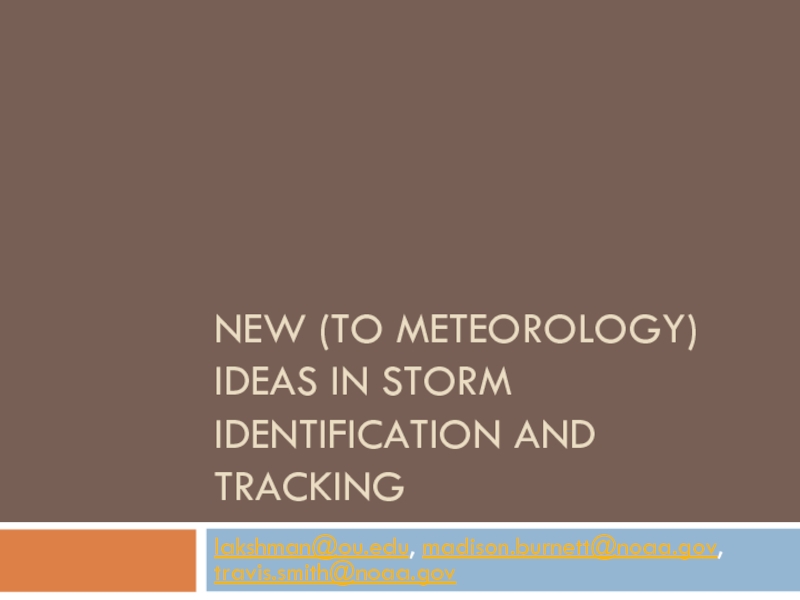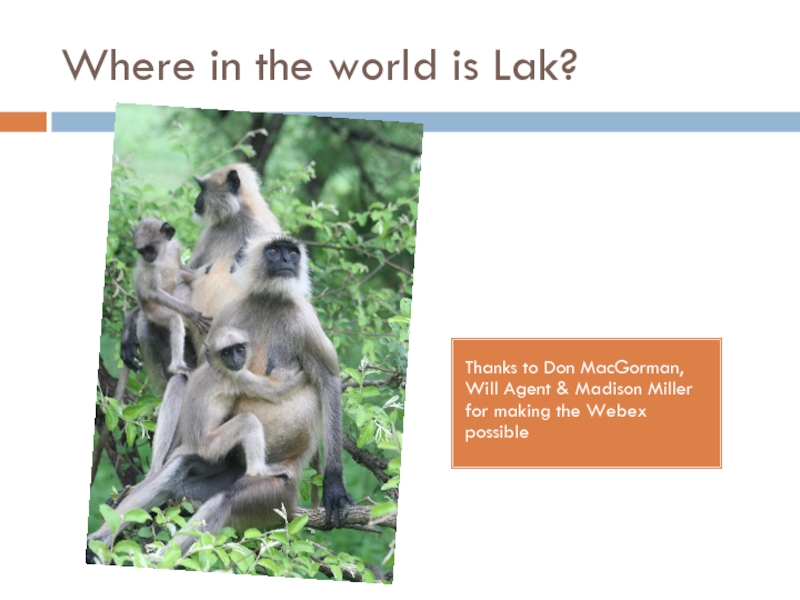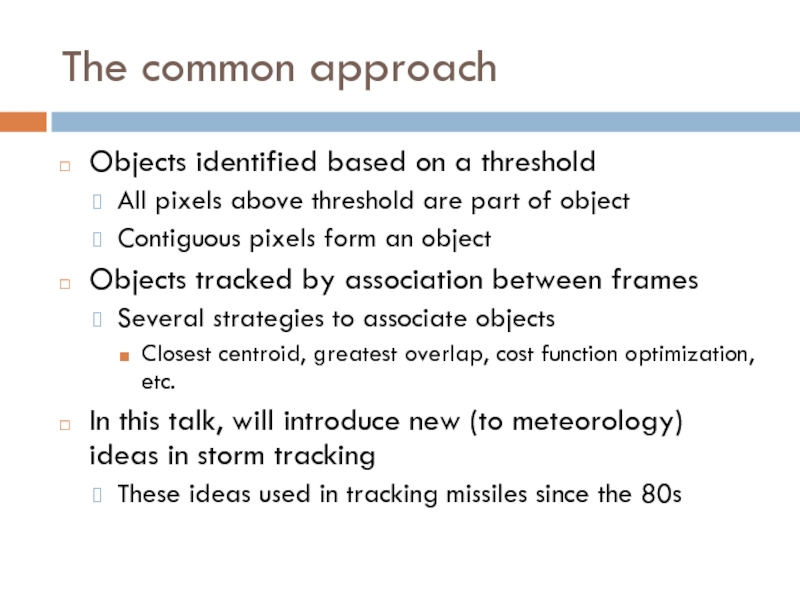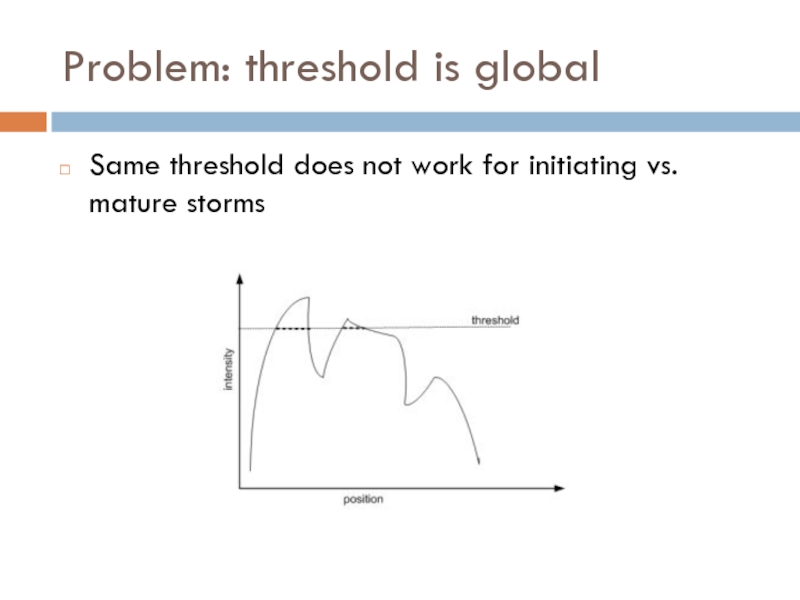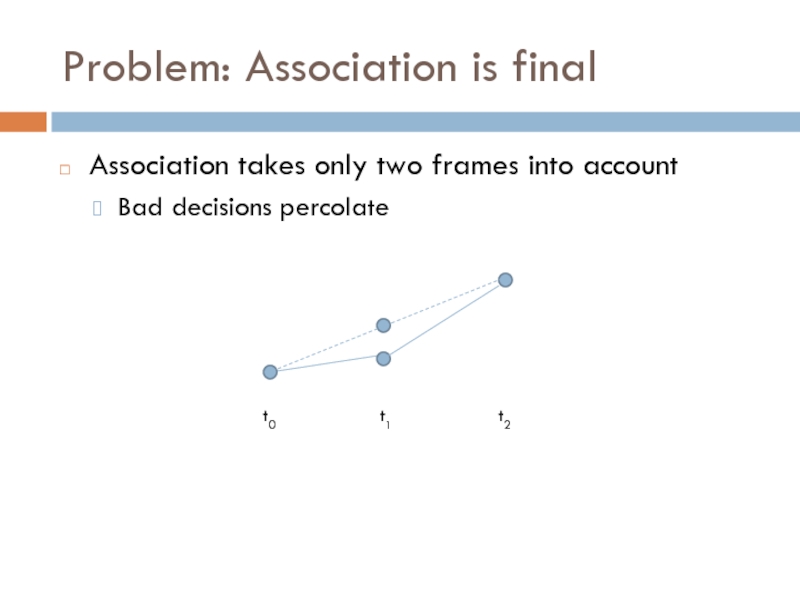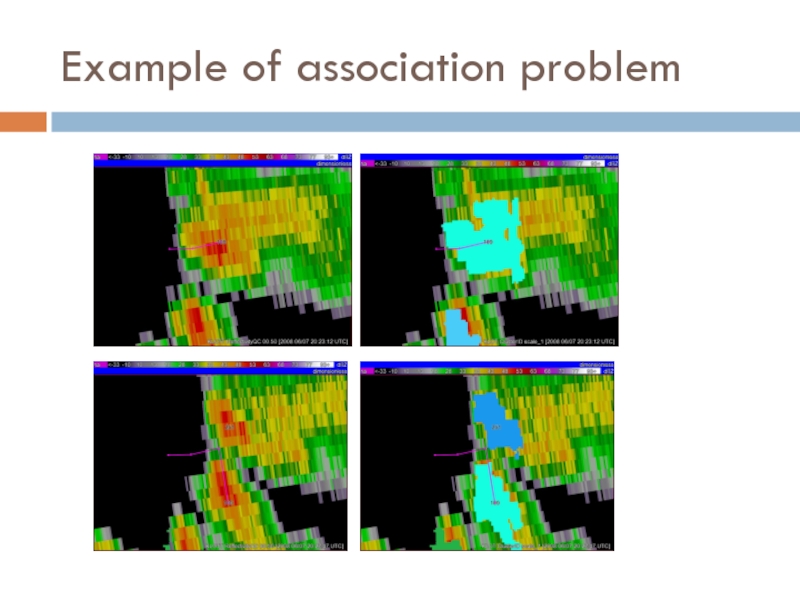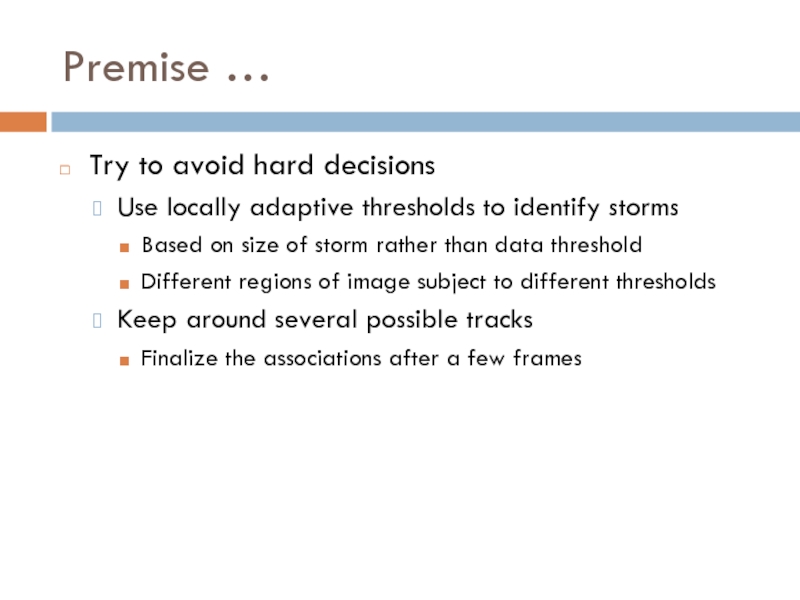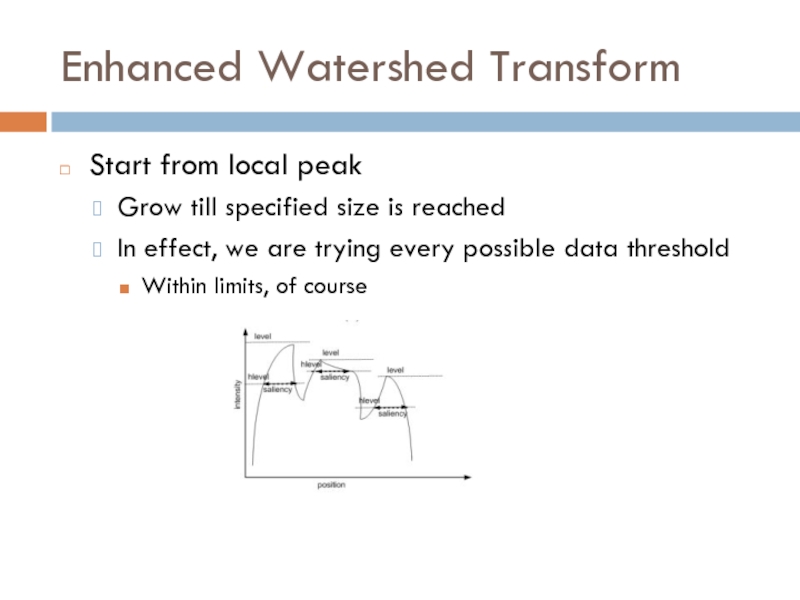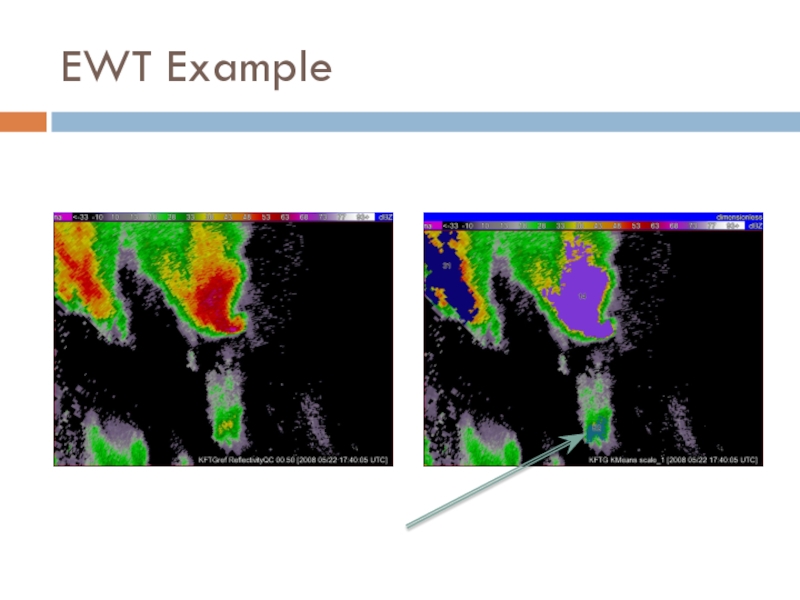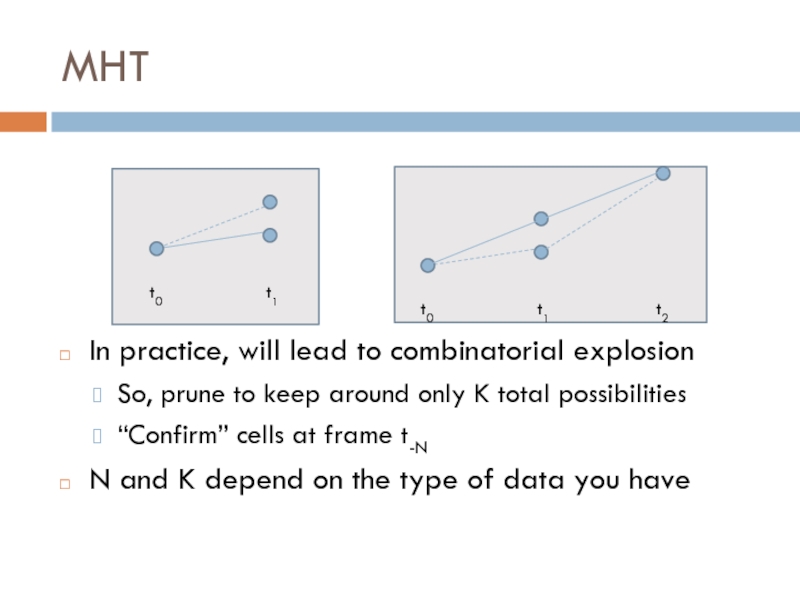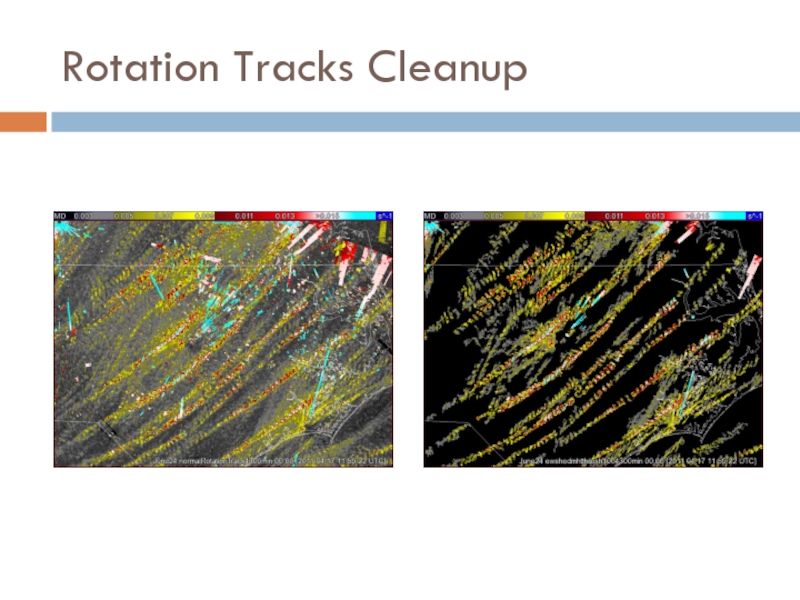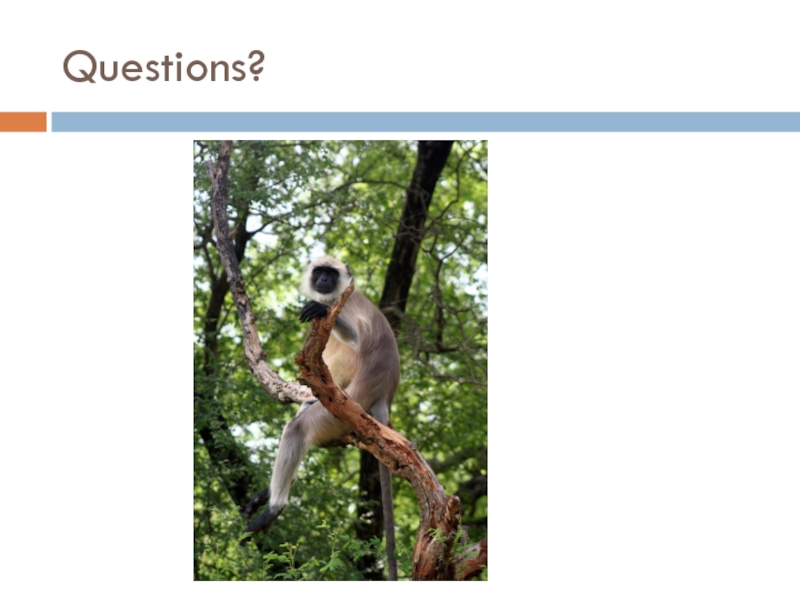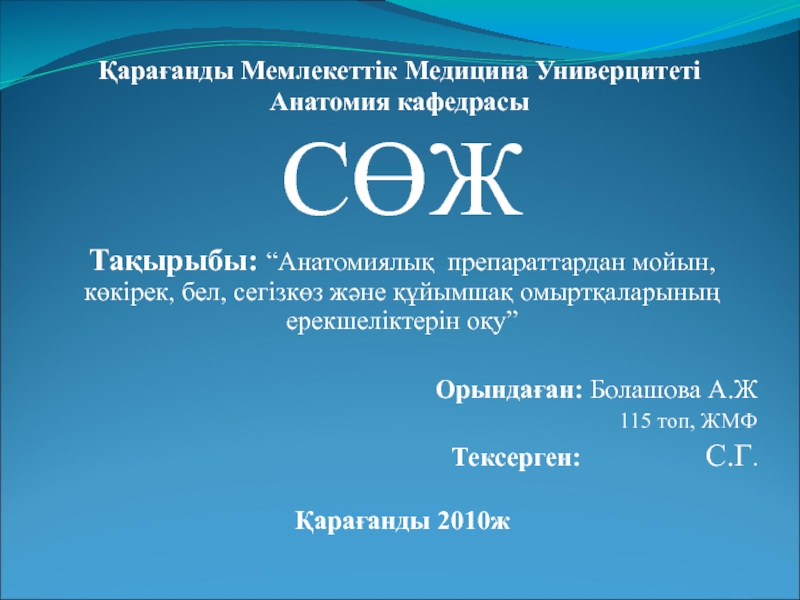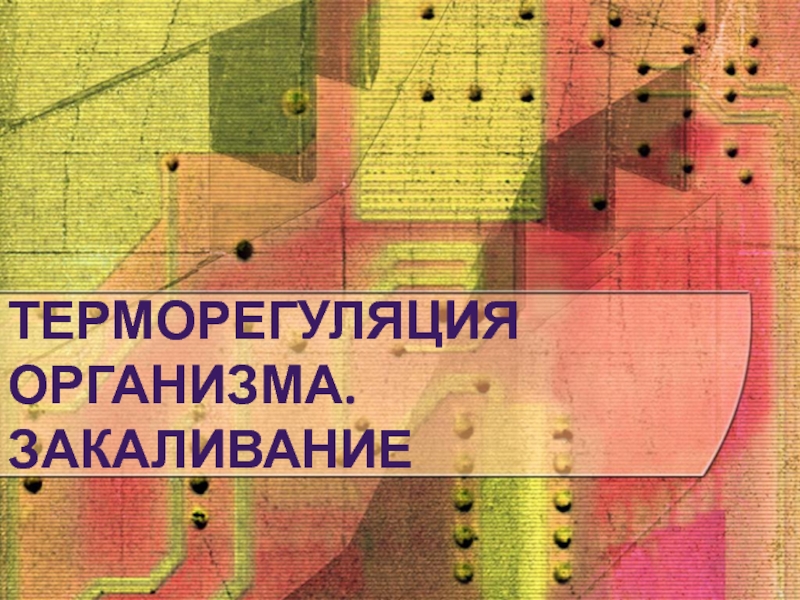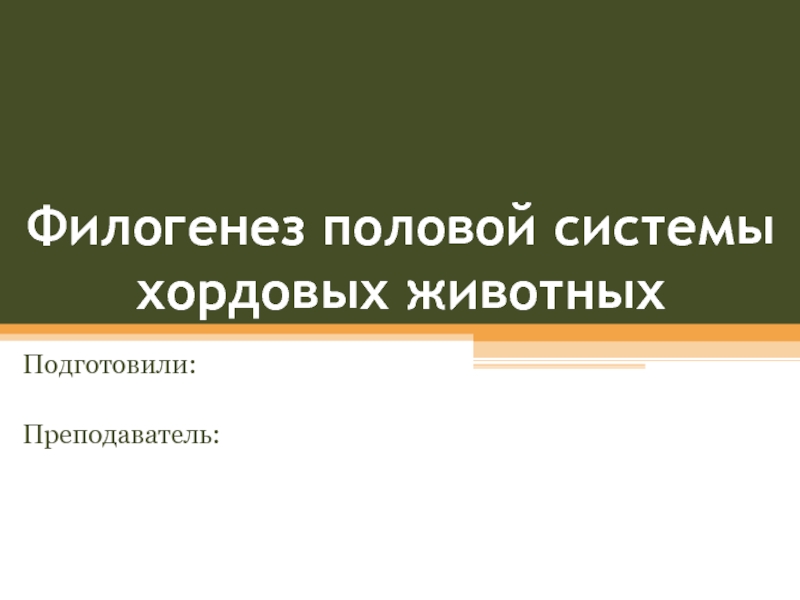- Главная
- Разное
- Дизайн
- Бизнес и предпринимательство
- Аналитика
- Образование
- Развлечения
- Красота и здоровье
- Финансы
- Государство
- Путешествия
- Спорт
- Недвижимость
- Армия
- Графика
- Культурология
- Еда и кулинария
- Лингвистика
- Английский язык
- Астрономия
- Алгебра
- Биология
- География
- Детские презентации
- Информатика
- История
- Литература
- Маркетинг
- Математика
- Медицина
- Менеджмент
- Музыка
- МХК
- Немецкий язык
- ОБЖ
- Обществознание
- Окружающий мир
- Педагогика
- Русский язык
- Технология
- Физика
- Философия
- Химия
- Шаблоны, картинки для презентаций
- Экология
- Экономика
- Юриспруденция
New to Meteorology ideas in storm Identification and tracking презентация
Содержание
- 1. New to Meteorology ideas in storm Identification and tracking
- 2. Where in the world is Lak? Thanks
- 3. The common approach Objects identified based on
- 4. Problem: threshold is global Same threshold does not work for initiating vs. mature storms
- 5. Example of threshold problem
- 6. Problem: Association is final Association takes only two frames into account Bad decisions percolate
- 7. Example of association problem
- 8. Premise … Try to avoid hard decisions
- 9. Enhanced Watershed Transform Start from local peak
- 10. EWT Example
- 11. Multiple Hypotheses Tracking (MHT) MHT is based
- 12. MHT In practice,
- 13. EWT and MHT in QC of Az-Shear
- 14. Rotation Tracks Cleanup
- 15. Summary Can avoid/postpone hard decisions in tracking
- 16. Questions?
Слайд 1NEW (TO METEOROLOGY) IDEAS IN STORM IDENTIFICATION AND TRACKING
lakshman@ou.edu, madison.burnett@noaa.gov, travis.smith@noaa.gov
Слайд 2Where in the world is Lak?
Thanks to Don MacGorman, Will Agent
& Madison Miller for making the Webex possible
Слайд 3The common approach
Objects identified based on a threshold
All pixels above threshold
are part of object
Contiguous pixels form an object
Objects tracked by association between frames
Several strategies to associate objects
Closest centroid, greatest overlap, cost function optimization, etc.
In this talk, will introduce new (to meteorology) ideas in storm tracking
These ideas used in tracking missiles since the 80s
Contiguous pixels form an object
Objects tracked by association between frames
Several strategies to associate objects
Closest centroid, greatest overlap, cost function optimization, etc.
In this talk, will introduce new (to meteorology) ideas in storm tracking
These ideas used in tracking missiles since the 80s
Слайд 6Problem: Association is final
Association takes only two frames into account
Bad decisions
percolate
Слайд 8Premise …
Try to avoid hard decisions
Use locally adaptive thresholds to identify
storms
Based on size of storm rather than data threshold
Different regions of image subject to different thresholds
Keep around several possible tracks
Finalize the associations after a few frames
Based on size of storm rather than data threshold
Different regions of image subject to different thresholds
Keep around several possible tracks
Finalize the associations after a few frames
Слайд 9Enhanced Watershed Transform
Start from local peak
Grow till specified size is reached
In
effect, we are trying every possible data threshold
Within limits, of course
Within limits, of course
Слайд 11Multiple Hypotheses Tracking (MHT)
MHT is based on two useful algorithms:
Hungarian Method
or Munkres algorithm
Optimal way to associate cells at one frame to the cells at the next frame using linear programming
Based on a “cost” for each pair: could be simply distance between centroids or something more complex
Murty’s K-best association
Way to get not just the best way to associate cells, but the next best way, and the next best way, etc.
Ranked set of associations
Optimal way to associate cells at one frame to the cells at the next frame using linear programming
Based on a “cost” for each pair: could be simply distance between centroids or something more complex
Murty’s K-best association
Way to get not just the best way to associate cells, but the next best way, and the next best way, etc.
Ranked set of associations
Слайд 12MHT
In practice, will lead to combinatorial explosion
So, prune to keep around
only K total possibilities
“Confirm” cells at frame t-N
N and K depend on the type of data you have
“Confirm” cells at frame t-N
N and K depend on the type of data you have
Слайд 13EWT and MHT in QC of Az-Shear
Azimuthal Shear a very noisy
field
Rotation tracks (accumulation of Az-Shear) even noisier
A problem at even one time step persists for long time
Can use EWT and MHT to QC the Az-shear field
Identify “cells” of Az-Shear
See which cells potentially pan out
The real-time accumulation uses all Az-Shear from current time, but only the “cells” from previous time steps that are associated with one of the K-best associations …
Rotation tracks (accumulation of Az-Shear) even noisier
A problem at even one time step persists for long time
Can use EWT and MHT to QC the Az-shear field
Identify “cells” of Az-Shear
See which cells potentially pan out
The real-time accumulation uses all Az-Shear from current time, but only the “cells” from previous time steps that are associated with one of the K-best associations …
Слайд 15Summary
Can avoid/postpone hard decisions in tracking
Use locally adaptive thresholds to identify
storms
Paper in J. Tech. 2009
Keep around several possible tracks to decide later
In situations where strict causality can be avoided
Paper coming …
Paper in J. Tech. 2009
Keep around several possible tracks to decide later
In situations where strict causality can be avoided
Paper coming …
